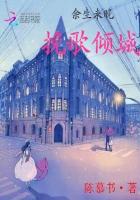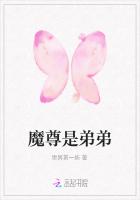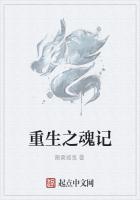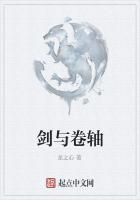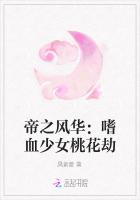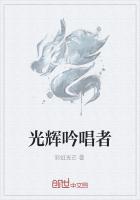[1] 杨莉:《十年来我国奥林匹克运动研究综述》,《体育文化导刊》2003年第4期,第28—31页。
[2] 陈立基:《近年来我国关于奥林匹克运动的研究综述》,《体育科技》2004年第4期,第1—8页。
[3] 任海:《顾拜旦与奥林匹克仪式》,《中国体育科技》2001年第3期,第8—10页。
[4] Chaim Weim,Untitled letter concerning the Opening Ceremony of the Games,Olympic Review,1971(40-41):47-48.
[5] Opening ceremony,Olympic Review,1984(203):594.
[6] Bill Mallon, The history of the opening ceremonies,Olympic Review, 1984(199):333-337.
[7] Nina K. Pappas, The Opening Ceremony of the Olympic Games,Olympic Review,1981(165-166):447-449.
[8] Sven Thofelt,Sport! Why? Thoughts at the opening ceremony of the Olympic Games,Olympic Review, 1975(91-92):179-180.
[9] Sean P. Sullivan & Robert A. Mechikoff,A Man of His Time: Pierre de Coubertin’s Olympic Ideology and the Via Media,Olympika, 2004(13):27-51.
[10] John Slater,Changing Partners:The Relationship Between the Mass Media and the Olympic Games,Global and Cultural Critique:Problematizing the Olympic Games:Fourth International Symposium for Olympic Research,1998, p49-68.
[11] Jarle Hysaeter,The Games must go on! But with what kind of television coverage?Olympic Review, 1977(112):91-94.
[12] Taylor Downing,Olympism on screen,Olympic Review,1995 (2):57-61.
[13] JeanLoup Chappelet,Multimedia reporting of the Olympic Games,Olympic Review, 1985(215):561-565.
[14] Conrado Durántez,Peace in the ideology of Baron de Coubertin,Olympic Review, 2001 (38):45-47.
[15] Ian Jobling,Girls and Tea Ladies:Involvement of Australian Female Athletes and Administrators in the 1956 Melbourne Olympic Games,Sporting Traditions,2001(1):75-90.
[16] T.A.Bhuvanendra, Human rights in the realm of sport,Olympic Review, 1998 (24):15-35.
[17] Fritz K. Mathys, Those controversial games of 1906,Olympic Review, 1979 (146):694-695.
[18] Karl Lennartz,The 2nd International Olympic Games in Athens 1906,Journal of Olympic History, 2002 (1):10-27.
[19] Jeremy White,The Los Angeles Way of Doing Things: The Olympic Village and the Practice of Boosterism in 1932,Olympika: The International Journal of Olympic Studies, 2002(11):79-116.
[20] Mark Dyreson, Marketing National Identity:The Olympic Games of 1932 and American Culture,Olympika: The International Journal of Olympic Studies, 1995(4):23-48.
[21] Christopher Young, When Adolf Met Pierre? The Olympic Games in the Age of Technical Reproduction,Globalization and Sport in Historical Context Conference,2005, p36.
[22] James M. Pitsula, The Nazi Olympics: A Reinterpretation,Olympika, 2004(13):1-25.
[23] Norman Baker, The Games That Almost Weren’t:London 1948,Critical Reflections on Olympic Ideology:Second International Symposium for Olympic Research, 1994, p107-116.
[24] Amy Bass, Fists of Freedom: The Story of the 1968 Olympic Games,Journal of Sport History, 2002 (3):528-530.
[25] John Hargreaves, Freedom for Catalonia:Catalan Nationalism, Spanish Identity and the Barcelona Olympic Games,Olympika:The International Journal of Olympic Studies,2001(10):101-104.
[26] SeHo Park, World coverage of progress and harmony,Olympic Review, 1987(242):630-632.
[27] Ian Watts, Selling Australia:Cathy Freeman and the Construction of an Australian Identity, The Global Nexus Engaged:Past, Present, Future Interdisciplinary Olympic Studies, 2002, p77-84.
[28] Beatriz Garcia, Enhancing Sport Marketing through Cultural and Arts Programs:Lessons from the Sydney 2000 Olympic Arts Festivals,Sport Management Review, 2001 (2):193-219.
[29] Margaret MacNeill, Peter Connelly and Graham Knight, Contested Nationalisms: Canadian AthleteMediaSponsor Relations & Preparations for the Sydney Olympic Games,Bridging Three Centuries:Intellectual Crossroads and the Modern Olympic Movement:Fifth International Symposium for Olympic Research, 2000, p17-28.
[30] Larry R. Gerlach, The Mormon Games:Religion, Media, Cultural Politics, and the Salt Lake Winter Olympic,Olympika:The International Journal of Olympic Studies, 2002(11):1-52.
[31] Jim Nendel, The Cold War:Emerging from the Ice at the 1956 Cortina d’Ampezzo Winter Olympic Games,The Global Nexus Engaged:Past, Present, Future Interdisciplinary Olympic Studies, 2002, p199-204.
[32] Ljubisa Zecevic, The Winter Games:Their Contributions to Worldwide Olympic Consciousness, Olympic Perspectives:Third International Symposium for Olympic Research, 1996, p267-273.
[33] Douglas Booth,Economics of the Olympic Games:Hosting the Games 1972-2000,Olympika:The International Journal of Olympic Studies, 2001(10):87-92.
[34] Steven W. Pope,American Muscles and Minds:Public Discourse and the Shaping of a National Identity during Early Olympiads, 1896-1920 Proceedings,First International Symposium for Olympic Research,1992, p105-124.
[35] Elizabeth A. Hanley,The Role of Dance in the 1936 Berlin Olympic Games:Why Competition became Festival and Art became Political,Cultural Relations Old and New:The Transitory Olympic Ethos,Seventh International Symposium for Olympic Research,2004, p133-140.
[36] Walter Borgers,From the Temple of Industry to Olympic Arena:The Exhibition Tradition of the Olympic Games,Journal of Olympic History, 2003 (1):7-21.
[37] Philip Barker,Wembley Stadium:an Olympic Chronology 1923-2003,Journal of Olympic History, 2003 (2):14-18.
[38] Larry R. Gerlach,Church and Games:The Mormon Church and the Salt Lake Olympic Winter Games,The Global Nexus Engaged:Past, Present, Future Interdisciplinary Olympic Studies,2002, p13-28.
[39] Jennifer Hockey,The Olympic sites of the Games(Sydney 2000),Olympic Review, 2000 (34):17-24.
[40] Philip Barker,The Anthem——Olympism’s Oldest Symbol,Journal of Olympic History,2004(2):46-53.
[41] Philip Barker,Goin back to its roots!The Olympic anthem in Sydney,Olympic Review, 2001(37):45-46.
[42] HansDieter Krebs,Sport and music:An uncommon partnership,Olympic Review,2001 (37):41-44.
[43] HansDieter Krebs,Olympic anthem,Olympic Review,2001 (39):79-82.
[44] William Guegold,The Five Rings of Olympic Music,Olympic Perspectives:Third International Symposium for Olympic Research,1996,p1-12.
[45] Oleg Vorontsov,1980 Moscow Torch:The Unknown History,Journal of Olympic History,2002 (2):24-30.
[46] Conrado Durántez,The Olympic torch(The Olympic torch relay),Olympic Review,2000 (33):16-23.







